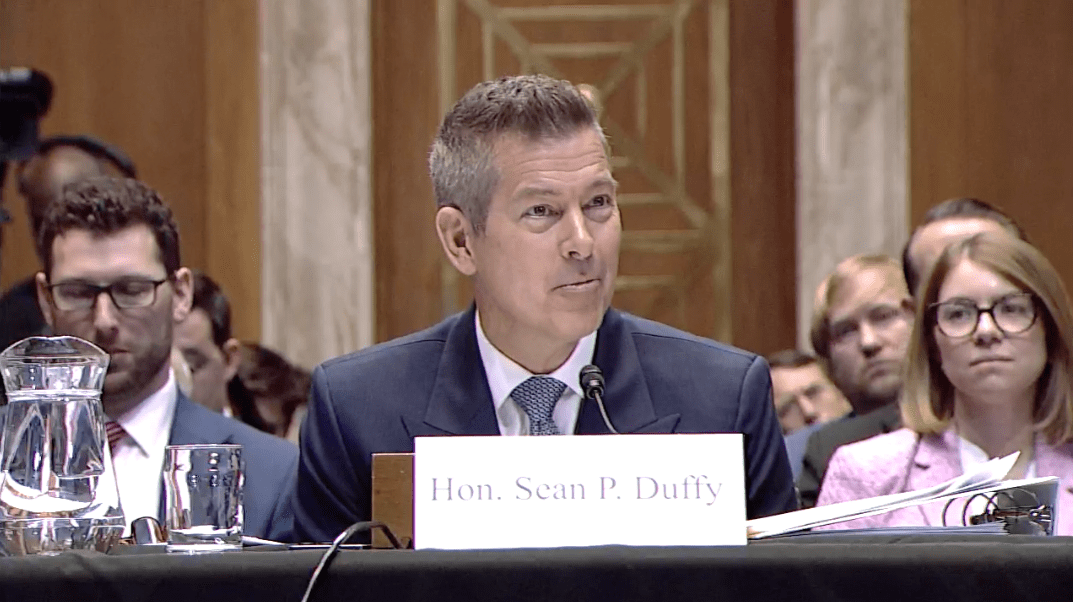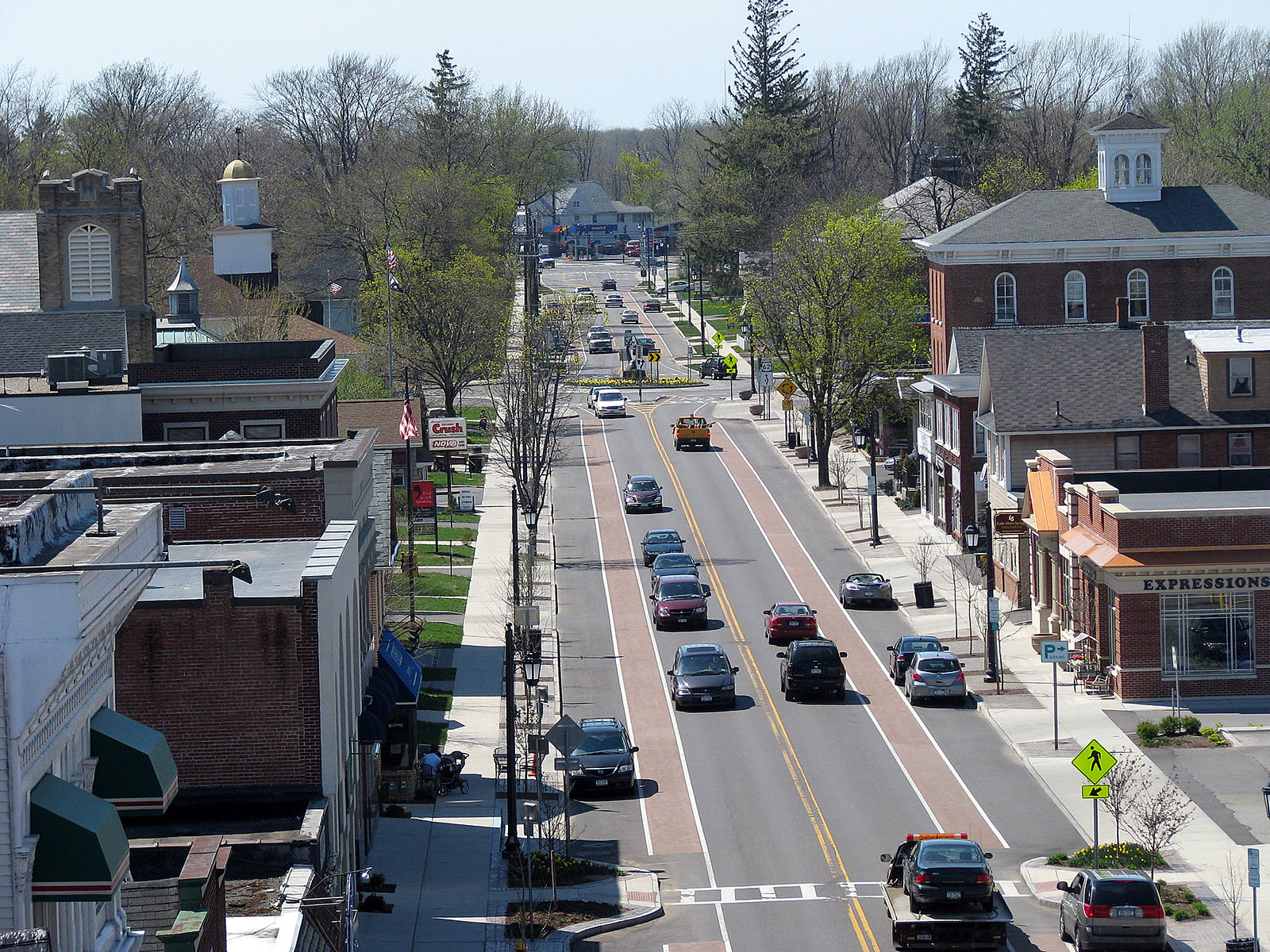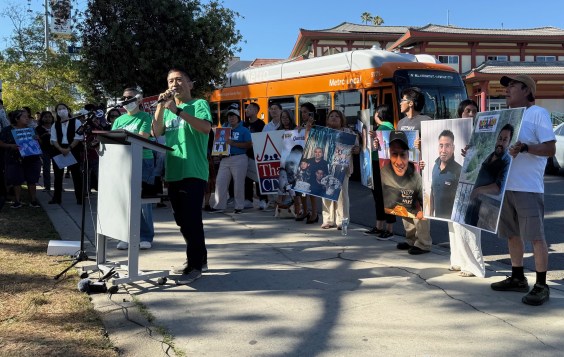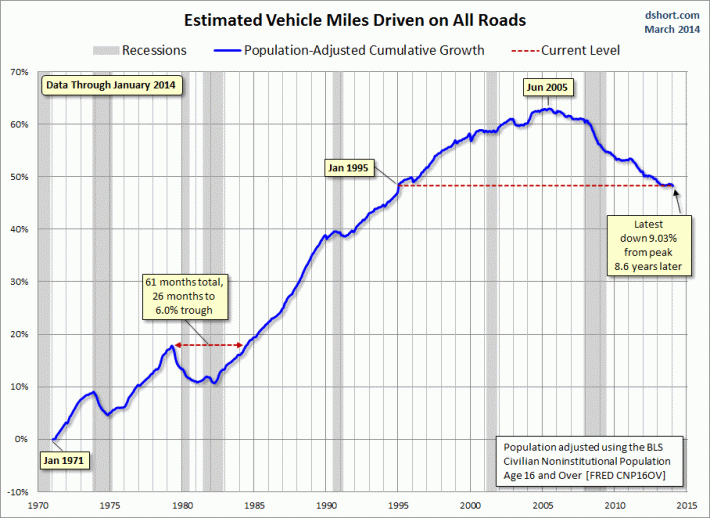
Don’t know what to make of the news that U.S. driving rates have dropped for the ninth year in a row? Looking for guidance about whether your state or city should be wantonly expanding roads or investing in transit, biking, and walking? The road lobby thinks you should turn to them for independent, unbiased analysis of these trends. Never fear, the road lobby says: Americans are driving more than ever. Pay no attention to the man behind the curtain. More lanes for everybody!
That’s the word from the American Road & Transportation Builders Association, which issued a memo Friday [PDF] to Congressional aides clarifying some “false claims” about transportation trends.
In virtually every recent congressional hearing and many media reports about federal transportation policy, the false claim that “Americans are driving less” emerges in some capacity. Federal Highway Administration (FHWA) data show U.S. vehicle miles traveled (VMT) increased 0.3 percent in 2012 and 0.6 percent in 2013. The upward trend is anticipated to continue well into the future as the nation’s economy and population continues to grow. This factual disconnect confuses discussions about the relative viability of various means to stabilize the Highway Trust Fund and support future federal highway and public transportation investments. The reality is that American driving trends are driven largely by macro-economic forces, not agenda-seizing assertions about shifts in societal behavior.
Take that, agenda seizers! See, VMT is increasing -- albeit slower than the population, and slower than transit ridership. Drivers have already made up a third of the miles "lost" since the recession (and surely they'll make up the rest any day now). The last 70 months of stagnant driving is nothing but a blip. Right?
Actually, if you look at per capita driving, it’s been 102 months of solid decline now.
The road lobby wants to convince Congress that driving will start growing steadily again. State DOTs have been making the same prediction for years, and they've been wrong every time:
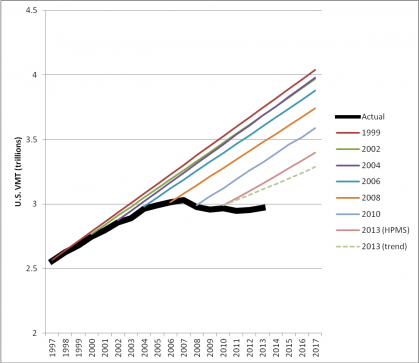
Though ARTBA charges that “the reported VMT decline between 2007 and 2011 has been seized by those whose aim is to push for federal policy that prioritizes non-automobile forms of transportation,” the organization is unabashedly pushing for antiquated and unsustainable policies that entrench automobile dependence and relentless roadway expansion:
Each year, the U.S. population grows just under three million, and the number of licensed drivers grows two million. With each driver in the U.S. averaging just under 12,000 miles per year, population growth alone will drive VMT up about 25 billion miles per year.
Sure, in the nineties, there were years in which VMT grew by up to 87 billion miles. Even as recently as 2005, driving spiked 72 billion miles over the course of a single year. But no longer. Total driving has dropped an average of 3.6 billion miles a year for the last eight years.
No one knows exactly what will happen in the future. But when the current shift away from driving offers the potential to unlock a healthier and more sustainable future, with expanded transportation options and all the benefits of reducing automobile dependence, why would we follow ARTBA’s prescription and bet the bank on outdated modes?
